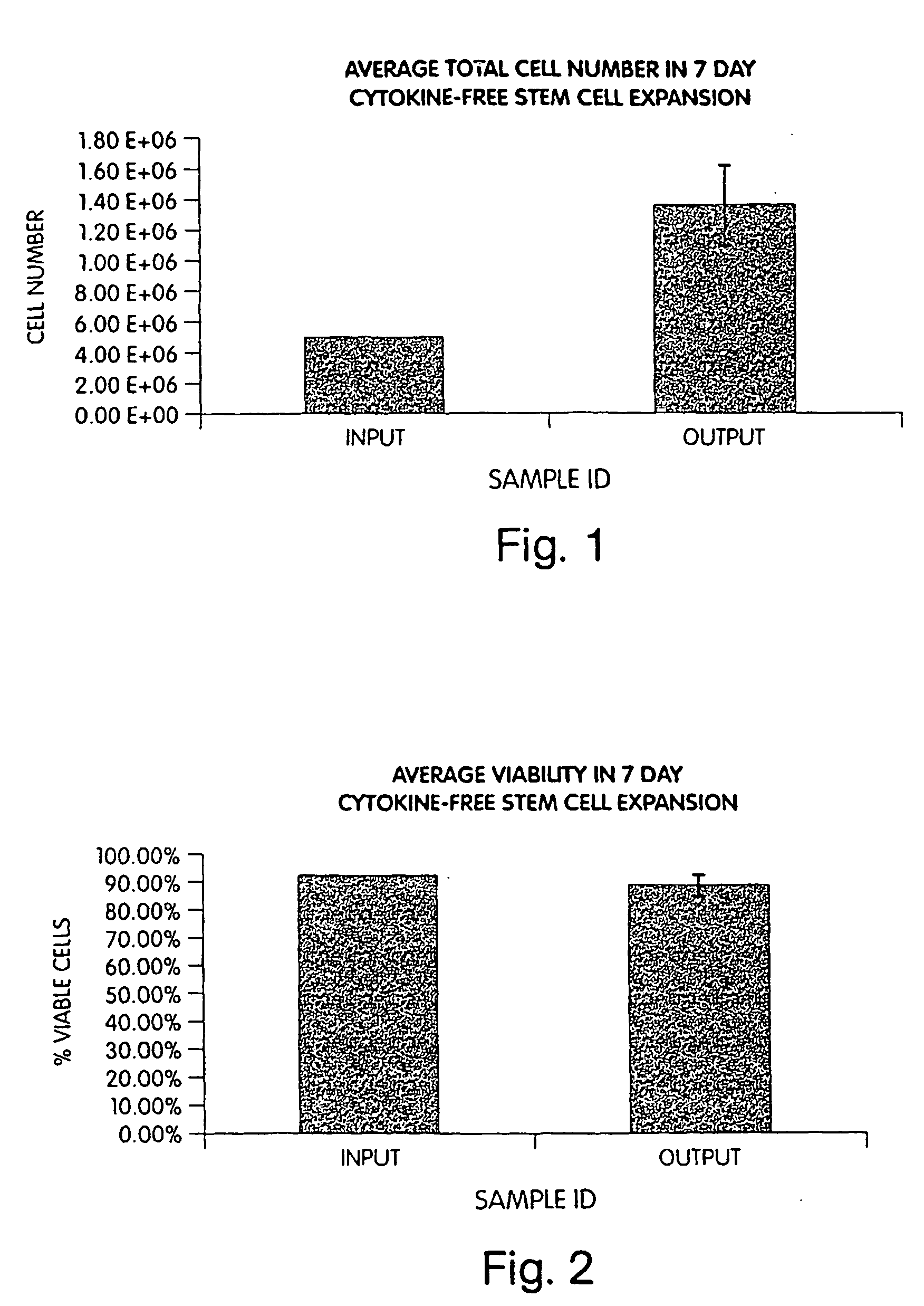Cytokine-free growth and maintenance of progenitor cells
a hematopoietic progenitor cell, cytokine-free technology, applied in the field of hematopoietic cells, can solve the problems of depleting the immature hematopoietic progenitor population, fibronectin alone may not be sufficient to maintain primitive hematopoietic progenitor cells in vitro, and the risks of infection and immune reaction to non-autologous bone marrow transplantation, etc., to increase the number of stem cell
- Summary
- Abstract
- Description
- Claims
- Application Information
AI Technical Summary
Benefits of technology
Problems solved by technology
Method used
Image
Examples
examples
Cell Separation and Culture:
[0048] CD34+ hematopoietic progenitor cells were derived from mononuclear cells isolated from human mobilized peripheral blood (mPB) by Ficoll separation and magnetic anti-human CD34+ beads (Miltenyi Biotec, Auburn, Calif.).
[0049] CD34+ hematopoietic progenitor cells can also be derived from human bone marrow or umbilical cord blood. These sources are commercially available from Poietics, Gaithersburg, Md. In some instances, the magnetic bead separation step can be followed by separation from the beads using an anti-idiotype antibody (e.g., Detachabead, Dynal).
[0050] Five hundred thousand CD34+ cells were seeded into individual wells of a standard 48-well tissue culture plate (Becton Dickinson / Falcon, Bedford, Mass.). Cultures utilized between 0.35-1 ml of QBSF-60 liquid medium (Quality Biological, Gaithersburg, Md.) supplemented with 5% pooled human AB serum (BioWhittaker, Walkersville, Md.). Cultures were incubated in a 37° C., 5% CO2 incubator for ...
PUM
| Property | Measurement | Unit |
|---|---|---|
| time | aaaaa | aaaaa |
| time | aaaaa | aaaaa |
| time period | aaaaa | aaaaa |
Abstract
Description
Claims
Application Information
 Login to View More
Login to View More - R&D
- Intellectual Property
- Life Sciences
- Materials
- Tech Scout
- Unparalleled Data Quality
- Higher Quality Content
- 60% Fewer Hallucinations
Browse by: Latest US Patents, China's latest patents, Technical Efficacy Thesaurus, Application Domain, Technology Topic, Popular Technical Reports.
© 2025 PatSnap. All rights reserved.Legal|Privacy policy|Modern Slavery Act Transparency Statement|Sitemap|About US| Contact US: help@patsnap.com


